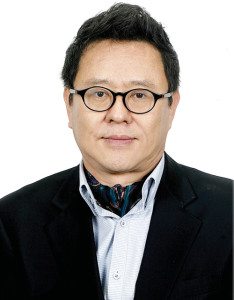We have heard of software and hardware techniques for reducing power consumption. K.N. Kim, regional vice president, Fairchild Semiconductor, speaks with Dilin Anand about how 3D motion capture technology and power systems in a package can help save energy. Founded in 1957, Fairchild is considered to be the seminal semiconductor company—their first product was the world’s first commercially-viable integrated circuit

Q. How would you segregate Internet of Things applications?
A. There may be two major opportunities. It could either be invisible, such as in an industrial application, or highly-visible, like a fashion accessory. There is a third category of smart fridges, which I think is totally useless.
The fashion IoT might not be good for business as it can change with the whims of the masses. The invisible one is where we are playing because it is about adding value.
Q. What do you have to say about sensor fusion and the challenges that developers face?
A. Sensors are inherently inaccurate. For example, pressure sensors are open to environment. Let us say you open this door very hard; it will have an effect on the pressure sensor on the motion tracker on your wrist—it looks like you have gone up and then suddenly gone down. Similarly, if you wave your hand around, it may think you are moving.
The idea with sensor fusion is to take all these signals, like accelerometers, gyros and GPS, together and get the right information. This can be found in an electronic gadget that has an apps processor, sophisticated software and algorithms—already smart for sensor fusion. However, some machines are not smart enough and that is where we come in. We provide the entire solution and optimal partitioning of the system between hardware and software.
Q. What has your team done to help save power?
A. We are investing in motion tracking solutions that design engineers can implement in their designs to save energy.
Q. How does motion tracking help in saving power?
A. Let me give you an example. There is 3D motion capture technology that gets us accurate positioning. If you put 3D motion tracking into a harvester, you can harvest with absolute precision. This way we can stick to the most efficient path.
Q. How does that data help in making precise movements?
A. When you use some combination of GPS and six inertial sensors, it gives you absolutely accurate positioning, which gives accurate data such as where the thing is, how fast it moves and whether it is efficient enough.
Q. Could you give a real-world example?
A. Let us take ships, for example. Often, only the top of the mast of sailing ships catches wind, while the rest of it is wasted. In order to catch more wind, we could try to increase the height of the mast but then it would cause the ship to capsize. This is why ships moved from wind to diesel power. However, we can bring back wind power with 3D motion capture system, as well as a steering mechanism, on the ship also equipped with 3D motion capture system. This reduces diesel consumption by up to 40 per cent.
Q. Why the choice of motion trackers for energy saving?
A. Sixty per cent of the world’s energy is used to physically move things. That is why we are focused on IoT, and on applications that use energy more efficiently.
Q. What are R&D teams of semiconductor companies working on to help tackle rising energy consumption?
A. While every end-market is in a different state of evolution, they are all progressing toward power systems in a package. This helps run the switching power supply at high frequency because there is less wasted power due to switching losses. This way, both energy density and time to market gets better.
Q. How unique is this technology?
A. These power systems contain controllers, drivers, low- or medium-voltage FETs, high-voltage IGBTs, MOSFETs, sensing and isolation to ensure a useful and safe product.
Q. What do these newer components offer the end user?
A. Every time energy is converted, inverted or transmitted, energy is lost. The newer technology, when deployed across devices along the route of power transmission, will have a cumulative effect on power savings that will make solar, wind and other clean sources of energy price-competitive with fossil fuels in the future.
Q. How do these newer components help manufacturers?
A. If we talk about adaptors, the newer ones are smaller and deliver about 70 per cent efficiency. These adaptors take less energy to build, too. When you make components smaller and energy density better, the amount of material that goes into this product also goes down. This reduces the overall cost of production.






